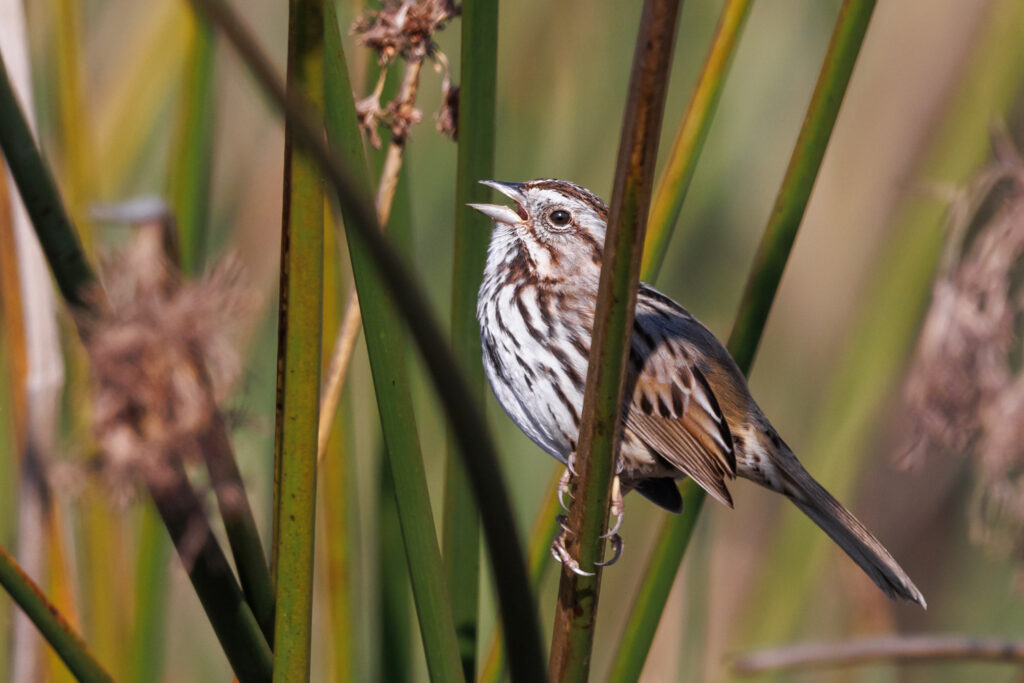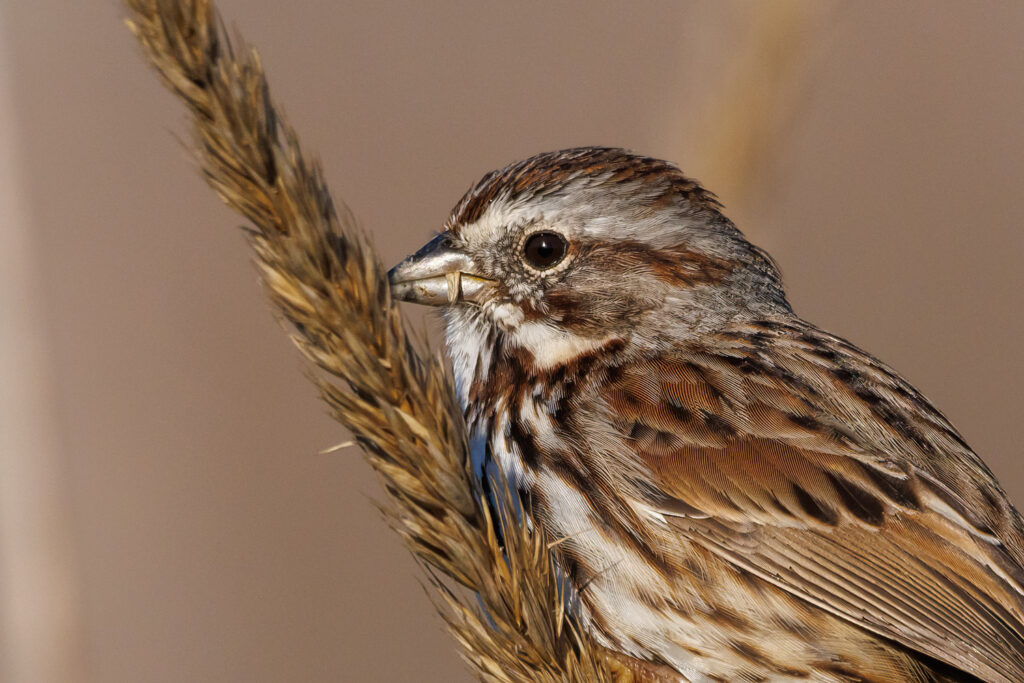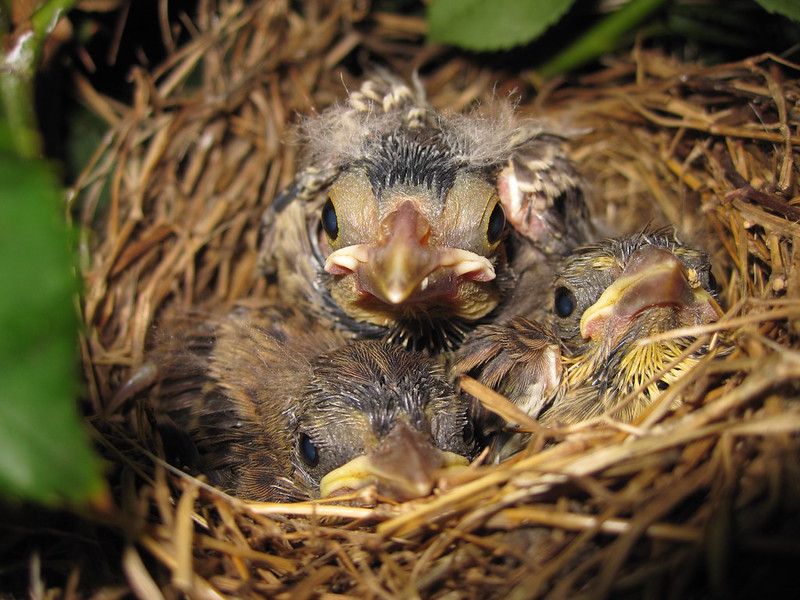
Melospiza melodia
Etymology: Melospiza is from the Greek words for “song-finch,” and melodia is from the Latin word for “melody.”
Description and Habitat
The song sparrow is a small songbird that can be found all over North America, ranging from southern Alaska and central Canada to northern Mexico. These birds are typically russet and gray, boasting streaks of brown and white that begin at the beak and come down to a white underside. Song sparrows also have relatively long tails, a feature that accounts for most of their body length.
While these birds tend to favor riparian areas (i.e. adjacent to streams), they can be observed in a wide variety of habitats such as arctic grasslands, coastal shrublands, deciduous woodlands, and even deserts. With these varying habitats, however, come varying colorations and plumages which reflect specific ecological adaptations. For example, song sparrows found in desert areas will typically have lighter plumage that may blend in better with sandy environments than their counterparts found in more lush riparian areas.
In the Los Padres National Forest and surrounding region, song sparrows are typically found at lower elevations in mountainous areas and are especially common in coastal areas. They tend to be year-round residents of the region, though they will usually migrate downslope from higher elevations during the winter.


Biology and Behavior
Another distinguishing feature of the song sparrow is its short and somewhat rounded bill. The shape and features of this bill give insight into the type of food that these birds eat which typically includes insects and seeds. About 20% of their diet consists of insects on average throughout the year, though this number can be as high as 70% in the spring when prey are more abundant. Regardless of whether they are foraging for insects or seeds, song sparrows mostly forage on the ground where they will scratch surface litter with their feet to expose food. However, ForestWatch staff have often observed song sparrows eating seeds and flowers directly on bush sunflower and native perennial bunchgrasses.
Song sparrows are gregarious, spending most of their time with their mate (over 80 % of song sparrows are monogamous) or in small groups. During mating season, which is between April and August, song sparrows will typically nest in shrubs or tangled vines obscured by other plants, a behavior used to protect the nests from potential predators. A song sparrow’s clutch size is generally comprised of 1-6 eggs, and the incubation period will last up to 15 days. After this incubation period is complete and the hatchlings emerge from their eggs, they are blackish brown, blind, and extremely clumsy.
As their name suggests, song sparrows are well known for their beautiful and distinct call that can easily be heard where they occur. The song consists of a few short, well-spaced notes followed by a variable trill. Some remember it as “maids, maids, maids, put on your teakettle-ettle-ettle ettle.”
Threats and Conservation
Song sparrows have a wide range of predators. Not only will raptor species like the Cooper’s hawk feed on them, but crows, ravens, jays, snakes, and small mammals are known to raid their nests. Unfortunately for song sparrows, they are favorites of the brown-headed cowbird in our region. These birds are known as brood parasites, who lay their eggs in the nests of unsuspecting host species (such as the song sparrow). Cowbird eggs typically hatch sooner than those of the host species, and they may push the other eggs out of the nest. Either way, the cowbird hatchlings are usually reared by the host species. Whether song sparrow nests are parasitized may depend on vegetation cover near the nest, with some studies finding that denser vegetation can reduce parasitism rates.

In the Los Padres National Forest, the song sparrow is considered a Management Indicator Species by the U.S. Forest Service. The species is an indicator for riparian habitat quality and abundance.
According to the North American Breeding Bird Survey, song sparrow populations have been relatively stable in California, though there appears to be an ongoing population decline that started in the late 2000s.
ForestWatch will continue to protect riparian and other areas with suitable habitat for song sparrows (as well as many other bird species). There is currently a proposal to use heavy equipment and other methods to clear vegetation across 235,000 acres within the Los Padres National Forest, including areas that likely support song sparrows. Learn more about this proposal and the widespread community opposition to it at ProtectYourForest.org.






